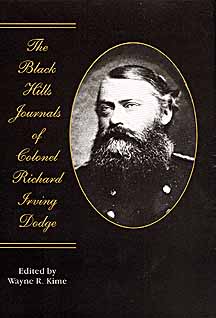Richard Irving Dodge, U.S. Army Officer. He was a career Army officer who served many years in the Western Plains, and participated in a number of the conflicts with the indigenous Indians. In 1882, he published “Our Wild Indians: Thirty Three Years Experience Among The Red Men Of The Great West, an acclaimed primary source about U.S. Army operations of the time and the Lives of the Native Americans Warriors of the Plains. Buried in Section 1, Arlington National Cemetery.
Courtesy of Michael T. Stein:
Colonel Richard Irving Dodge (1827 – June 16th, 1895)
Born in South Carolina
- Cadet USMA July 1, 1844
- (Brevet) Second Lieutenant July 1, 1848
- Second Lieutenant December 1848 (Number 1387) Graduated 19th in Class of 38.
- 1st Lieutenant March 3, 1855
- Captain May 3, 1861
- Lieutenant Colonel/Assistant Inspector General duties January-February 1863
- Major June 21, 1864
- Lieutenant Colonel October 29, 1873
- Colonel January 1, 1881 Aide-de-Camp to General Sherman 1881-82
- Colonel June 26, 1882
- Ret. May 19, 1891
- (Brevet Lieutenant Colonel & Colonel March 30, 1865)
- Served with 8th United States Infantry Regiment 1848-54.
- Regimental Adjudant, 8th United States Infantry Regiment 1854-55.
- Served with 12th United States Infantry Regiment 1864-66.
- Served with 30th United States Infantry Regiment 1866-69.
- Served with 3d United States Infantry Regiment 1869-73.
- Served with 23rd United States Infantry Regiment 1873-82
- Aide-De-Camp to General Sherman 1881-82
- Commanding Officer, 11th United States Infantry Regiment 1882-91.
- The Black Hills Journals of Colonel
Richard Irving Dodge
Edited by Wayne R. Kime
Cloth $29.95
In the spring and summer of 1875, Lieutnant Colonel Richard Irving Dodge escorted the scientific expedition of geologist Walter P. Jenney into the Black Hills of the Dakotas to determine the truth of rumors of gold started by General George Armstrong Custer the previous summer. The five-month trek north from Cheyenne, Wyoming, challenged Dodge’s 452 men with their wagons and animals, but in many respects it was “a delightful pic nic (without the ladies),” as Dodge described it.
Colonel Dodge wrote his journals daily in the field, and in their variety, discursiveness, and detail they convey clearly the pleasure he took in what he said was “the most delightful summer of my life.” Yet he used only a small fraction of what he recorded in his subsequent official communications and published works.
If it were not for this well-annotated and illustrated edition by Wayne R. Kime, readers would not have access to Dodge’s experiences with such characters as the stowaway Calamity Jane or the eccentric mountain man and backwoods philosopher California Joe, who was hired to guide the expedition. Dodge’s particular interests in hunting, fishing, and fine scenery also enliven his narrative, as do the politics dividing the miners from the Indians, and the soldiers from the scientists on the expedition.
The Black Hills Journals of Colonel Richard Irving Dodge is by far the most detailed account yet available of the conflicting claims, interests, and populations that converged on the Black Hills during the key transitional period before the Great Sioux War of 1876.
“Richard Irving Dodge’s Black Hills journals, skillfully annotated here by Wayne R. Kime, fill a gap in the historiography of this intriguing northern plains anomaly. While the world knows of Custer’s Black Hills exploration of 1874 and the subsequent gold rush and Sioux Indian war two years later, the scientific survey of 1875 is barely appreciated. As a journal of discovery and military travel, Dodge’s day-to-day narrative ranks among America’s best.”-Paul L. Hedren, Superintendent, Fort Union Trading Post National Historic Site, near Williston, North Dakota.
“Wayne R. Kime’s important edition of and contextual introduction to Lieutenant Colonel Richard Irving Dodge’s Black Hills journals at last illuminate an overlooked episode of western American history-the Jenney-Dodge Expedition to scientifically verify the gold reports of Custer’s previous expedition-and give it merited significance among the events leading to the country’s largest Indian war, the Great Sioux War of 1876-77. This book is a milestone in the history of western exploration as well as a splendid piece of editing craftsmanship.”-Jerome A. Greene, author of Battles and Skirmishes of the Great Sioux War, 1876-1877: The Military View. The Powder River Expedition Journals of Colonel Richard Irving Dodge (Edited By Wayne R. Kime).
Colonel Dodge’s journals, written with utter candor for his eyes only, are the fullest firsthand account we possess of Gen. Crook’s Powder River Expedition against the Sioux and Cheyenne Indians, which culminated in Colonel Mackenzie’s resounding destruction of Dull Knife’s forces on November 25, 1876. Dodge’s journals will clearly prove useful to specialists in U.S.-Indian relations and the Great Sioux War, but they will also appeal to variety of readers because of Dodge’s lively style and his range of subject matter.
On July 7, 1849, Fort Lincoln was established at the site used the year before by DeMontel. The 1,476-acre plot had been patented to the heirs of Milton Anderson on August 27, 1846.
The fort was built on the west bank of Seco Creek on high, open ground that provided a commanding view of the surroundings. Companies E and G of the Eighth United States Infantry, commanded by Major James Longstreet, were stationed at Fort Lincoln to repel and track down Indian raiders in protection of newly arrived European and American settlers and the commercial and military property transported on the Woll Road, an important trade route from San Antonio to Fort Duncan on the Rio Grande and points west. Longstreet’s second in command, Lieuteanant Richard Irving Dodge, was the man for whom Dodge City, Kansas, was named.Fort Lincoln was abandoned on July 20, 1852, after the frontier line had advanced westward. The buildings remained intact for some time, and the Texas Rangersqv made headquarters at the site. The barracks were torn down and transformed into residences east of Seco Creek at D’Hanis after being purchased by Irishman Richard Reily, who used the hospital building to raise his family. None of the buildings remains. On May 26, 1936, a dedication ceremony was held for the unveiling of a marker placed by the Texas Centennial Commission at the site.
Devils Tower National Monument, located in Crook County, Wyoming in the northeast corner of the state was established under Presidential Proclamation No. 658, Stat. 3236 on September 24, 1906. The proclamation states: In 1875 Lieutenant Colonel Richard Irving Dodge described the tower as “An immense obelisk of granite….Its summit is inaccessible to anything without wings. The sides are fluted and scored by the action of the elements, and immense blocks of granite, split off from the column by frost, are piled in huge, irregular mounds about its base.”Several published sources have acknowledged the inaccurate naming of the butte now called Devils Tower in 1875 by Colonel Dodge. The earliest map of the region labeled the butte “Grizzly Bear Lodge,” or Mateo Tepee to some local Indians (Mattison 1956). The erroneous name of Devils Tower stuck, however. American Indians feel the name is inappropriate and disrespectful of their culture. Some members of the climbing management plan work group have repeatedly urged the monument to rename the butte to a more culturally significant name. Though not within the scope of the FCMP, the NPS recognizes the legitimacy of this request. This issue will be considered separately at a later date. We have to keep our God placated with prayers, and even then we are never sure of him — how much higher and finer is the Indian’s God……Our illogical God is all-powerful in name, but impotent in fact; the Great Spirit is not all-powerful, but does the very best he can for his injun and does it free of charge. Marginalia written in copy of Richard Irving Dodge’s “Our Wild Indians”
DODGE CITY, city, seat of Ford Co., S Kansas, on the Arkansas R.; inc. 1875. It is the market and shipping center of a rich wheat-growing and cattle-raising area. Industries include the manufacture of farm machinery and livestock-handling equipment, and beef processing. Saint Mary of the Plains College (1952) and a junior college are here, as well as Boot Hill Cemetery (in use 1872-78), preserved as a reminder of the community’s turbulent early years, and a reconstruction of Dodge City as it was in 1876. The city, founded in 1872 with the arrival of the railroad, is named for both Col. Richard I. Dodge (1827-95), a leading member of the Dodge City Town Company founders, and for Fort Dodge (built in 1864; now a veterans’ home), due to its proximity to the newly formed city. Dodge City soon developed into a major shipping point for trail herds. Wyatt Earp and Bat Masterson were among its early law officers. Pop. (1980) 18,001; (1990) 21,129.
DODGE, JULIA P WIDOW OF R I
- DATE OF DEATH: 01/06/1926
- DATE OF INTERMENT: Unknown
- BURIED AT: SECTION WE SITE LOT 94-D
- ARLINGTON NATIONAL CEMETERY
- WIFE OF RI DODGE – COL US ARMY RETD
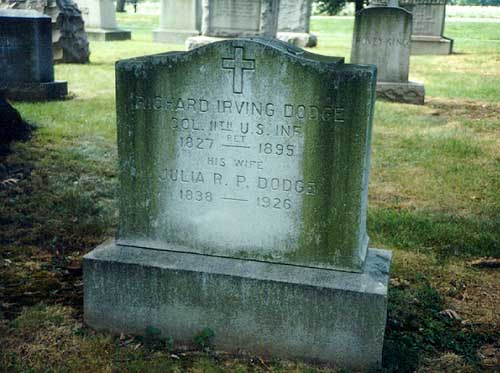
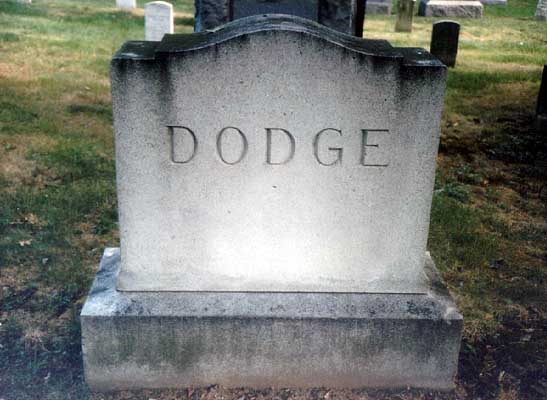
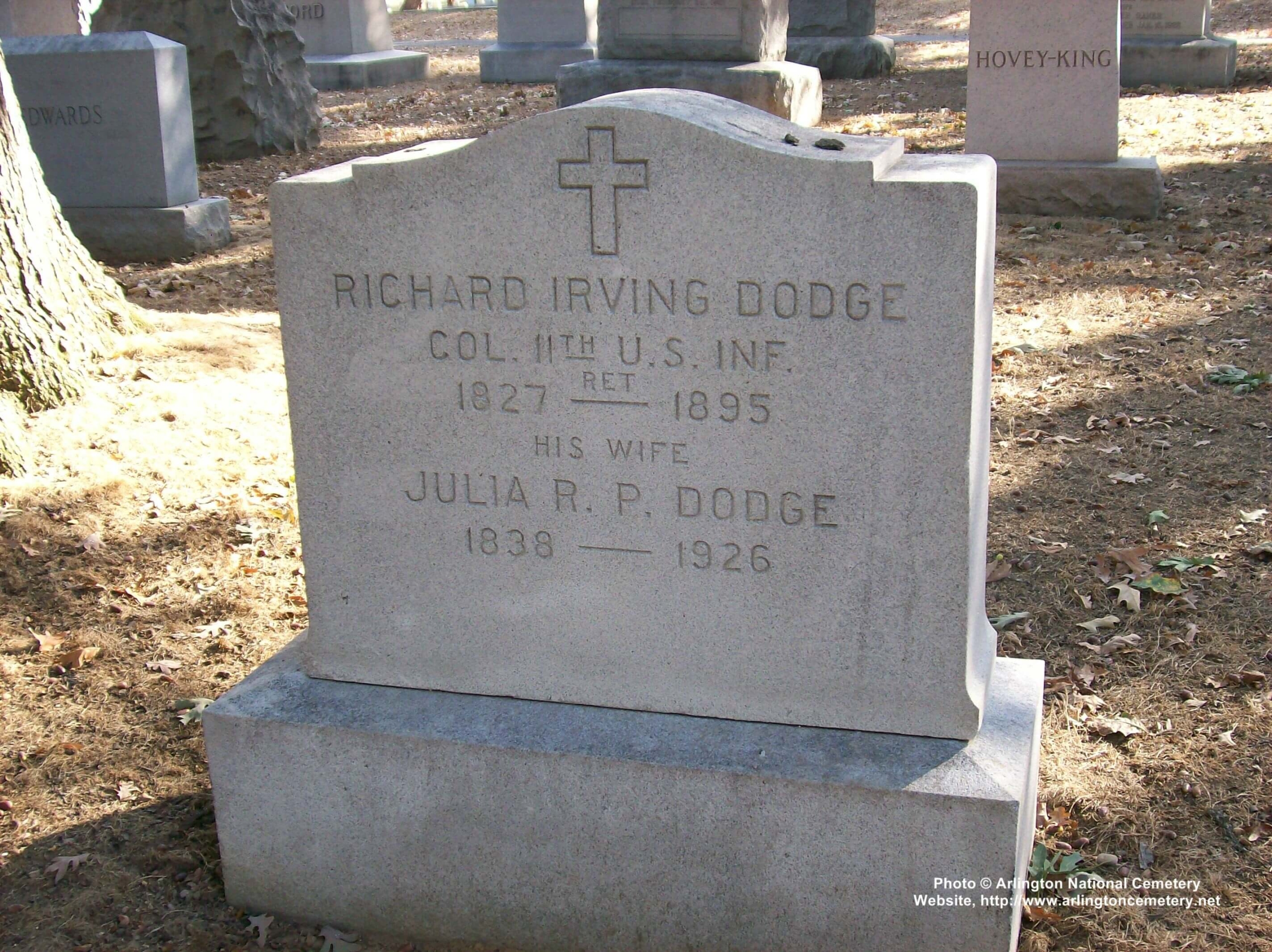
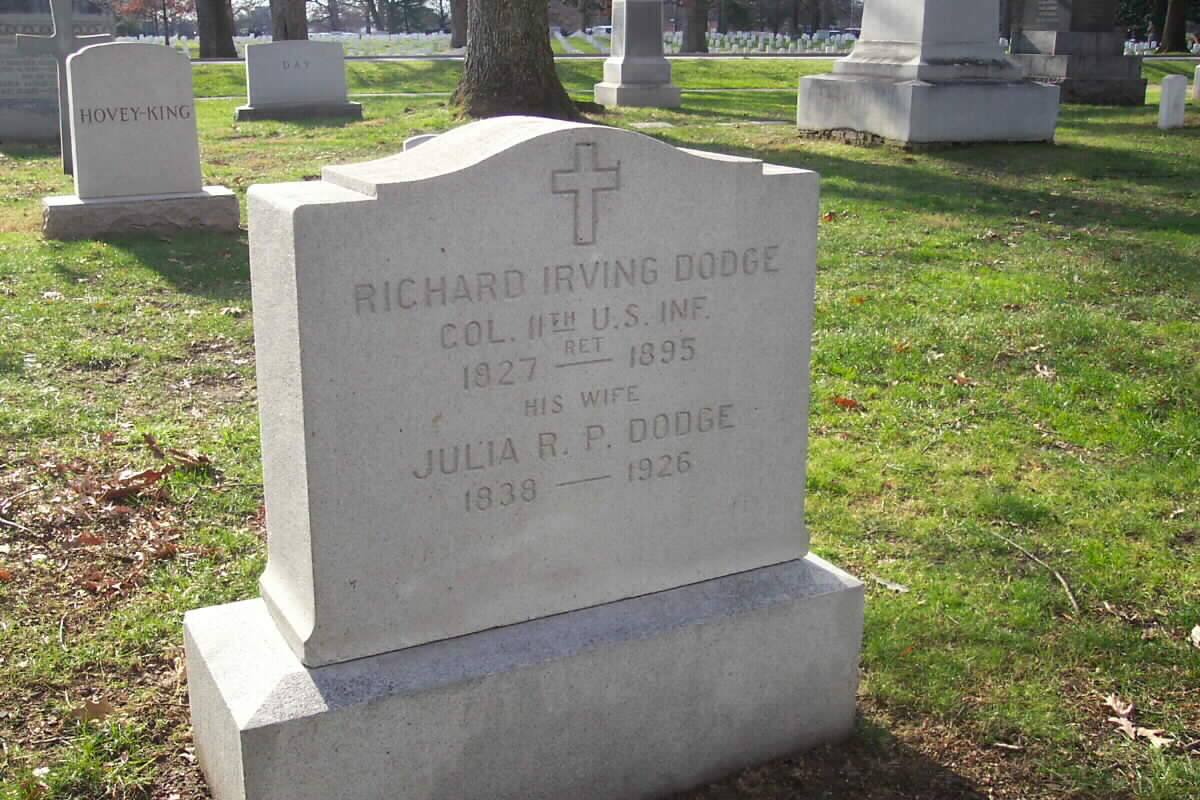
Michael Robert Patterson was born in Arlington and is the son of a former officer of the US Army. So it was no wonder that sooner or later his interests drew him to American history and especially to American military history. Many of his articles can be found on renowned portals like the New York Times, Washingtonpost or Wikipedia.
Reviewed by: Michael Howard

